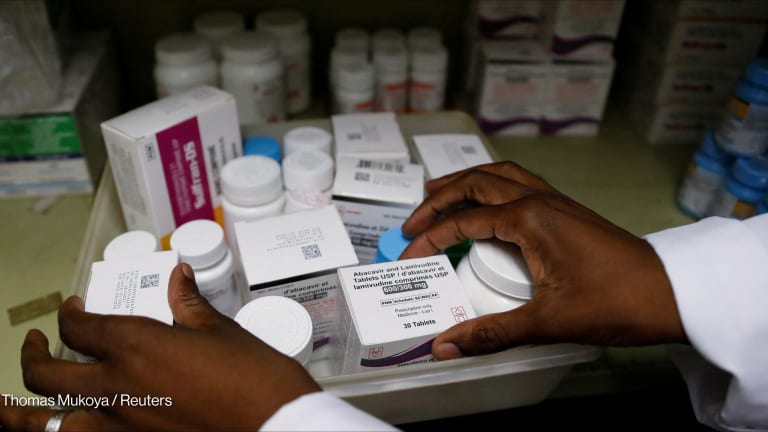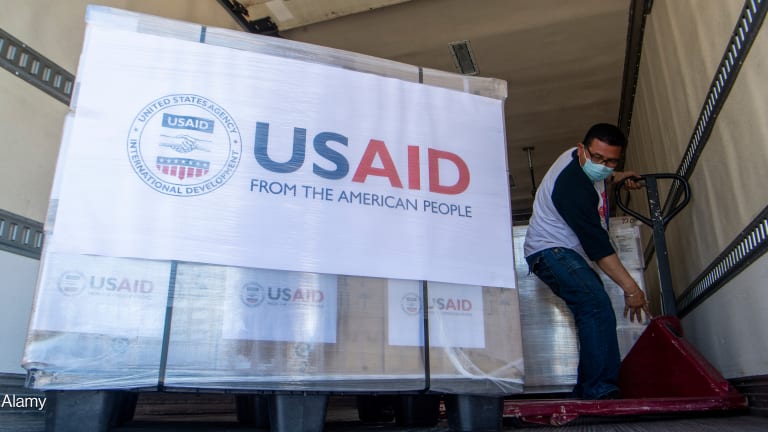
More than a year and a half after a congressionally mandated deadline came and went, the United States has finally named the countries and region in which it will implement the 2019 Global Fragility Act, a new U.S. approach to conflict prevention and stabilization.
Four countries — Haiti, Libya, Mozambique, and Papua New Guinea — were announced on Friday along with one region: coastal West Africa, which includes Benin, Côte d’Ivoire, Ghana, Guinea, and Togo. The news came after months of bureaucratic delays under President Joe Biden’s administration.
A joint statement from the U.S. Agency for International Development and the departments of State, the Treasury, and Defense called the release of the country and regional picks for the GFA “an important milestone.”
“The heartbreaking images we are seeing in Ukraine — the result of a vicious and unprovoked attack by [Russian President] Vladimir Putin — are only the latest reminder of the tragic consequences of global conflict and the need to avert violence before it erupts,” Biden wrote in a letter released alongside the five picks, making reference to the recent Russian invasion of that country.
“We know that working broadly, strategically, and cooperatively to prevent conflict and instability is the greatest investment we can make in America’s future, and in the future of the entire world.”
Now that the selections are public, the administration will develop “comprehensive” 10-year plans for each country or region, said Anne Witkowsky, assistant secretary of state for the Bureau of Conflict and Stabilization Operations, or CSO. These will emphasize “close cooperation between the United States and like-minded regional, national, and local actors, including civil society,” she told reporters during a briefing call Friday.
“With a focus on locally driven efforts and solutions tailored to local contexts, planning under the [global fragility] strategy will seek to address emerging threats and address the underlying causes of violence and instability,” she continued. “Our objective is to build resilience to prevent conflicts and crises from breaking out or deteriorating further.”
The GFA, passed by Congress in December 2019, contained several reporting deadlines for then-President Donald Trump’s administration to meet within a year. The White House was to submit a global fragility strategy in September 2020 that would detail the administration’s plans for implementing the law and the five countries or regions where the approach would be piloted. Specific strategies for each country and region were due to Congress by December of that year.
“This is the first bite at the apple. If all goes well, eventually … every conflict-affected and fragile state would be a GFA country.”
— Elizabeth Hume, executive director, Alliance for PeacebuildingBut the September deadline was not met, and a full global fragility strategy was not submitted until that December. The Trump administration never named the five locations or released the country or regional strategies, and the Biden administration didn’t have a permanent head of CSO — which is charged with implementing the GFA — until Witkowsky took on the role in January 2022.
Along with the country and regional selections, the Biden administration last week released a “2022 Prologue to the United States Strategy to Prevent Conflict and Promote Stability.” The short document lays out “guiding principles” for the White House’s implementation of the strategy, which fall into three categories: challenging the “U.S. Government status quo,” pursuing “meaningful partnership at all levels,” and exploiting “synergies with other Administration priorities.”
Robert Jenkins, assistant administrator for conflict prevention and stabilization at USAID, said his agency will be focused on how it can maximize working with local partners in searching for opportunities to build peace and stability in fragile contexts.
“We have learned many lessons in the last two decades, and some of them are very hard lessons,” Jenkins told reporters. “One of them is, we’re not only wasting time if we think we can impose our plan on a situation and expect to achieve success by force of will, number of boots on the ground, or amounts of dollars spent. We’re wasting time, energy, money, and goodwill to do it alone.”
Now that the locations have been announced and specific strategy development is beginning, the administration must have both short- and long-term plans for implementation, according to Elizabeth Hume, the executive director at the Alliance for Peacebuilding, a coalition of NGOs that advocated for passage of the GFA. The administration will likely take several months to develop and release the country and regional strategies, she said, but it can incorporate GFA principles into activities that are already taking place.
“[The administration needs to look] at aid programs that are already running: health, education — any place where you can put a conflict prevention lens on it, tweaking some of the existing programs that you might not think about being peace building,” Hume said. “This is the first bite at the apple. If all goes well, eventually every country, every conflict-affected and fragile state would be a GFA country.”








